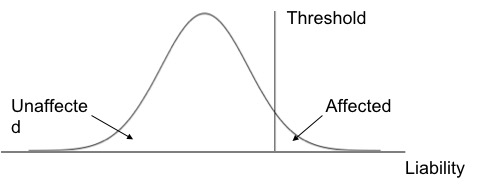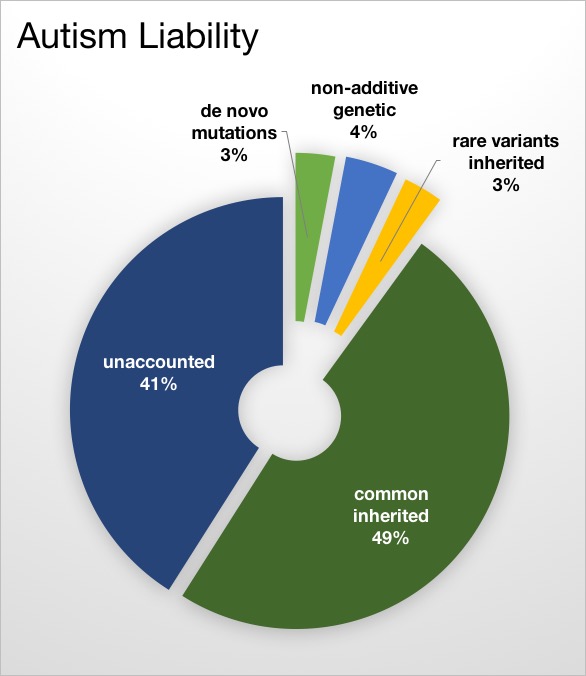Project
Overview
Background
What is Autism?
Autism spectrum disorder (ASD) is a group of neurodevelopmental disorders characterized by a spectrum of phenotypes: impairment in social interaction, responsiveness, repetitive, restricted behaviors. It often occur in the early childhood.
Autism is a lifelong, highly prevalent, and strongly genetic disorder defined by impairments in social and communicative function and by pronounced behavioral rigidities (Jones and Kiln. 2009). Clinical diagnostic criteria of autism spectrum disorder (ASD) is standardized in the Diagnostic and Statistical Manual, Fifth Edition (DSM-5) from the American Psychiatric Association. Read more
ASD is highly heterogeneous in underlying genetic constitution, phenotype and clinical courses. Yet no effective pharmacological treatment has been developed for the majority of patients. Molecular basis of rare genetic disorders presenting symptoms of ASD and epidemiological studies of environmental contribution start to reveal synaptic and immunological etiologies of ASD.
Liability threshold model to autism.

No more than 15% cases show identifiable genomic variants that may be associated with autism, and each of syndromic forms of autism comprises less than 1% of cases. Core symptoms of autism such as deficits in social communication and social interaction seem to follow the characteristics of quantitative traits rather than all-or-nothing phenomenon, therefore polygenic contribution with environmental impacts explains better than Mendelian models.
Liability threshold model with polygenic inheritance could serve a framework to understand the etiopathophysiology of autism. The liability threshold model assumes each individual has an underlying liability (affected) including genetic and environmental factors and it is normally distributed in a population. The probability of an individual is affected is when the combined genetic and environmental effects reach to a certain threshold (Benchek and Morris. 2013; van Dongen et al. 2012).
This model, as summarized by Falconer (Falconer 1965), includes both individual's innate tendency to develop the disease (i.e., susceptibility) and environmental factors that increase the disease risk. The causes of autism are unclear yet. In the past decades, researchers have found that genetic factors play a role in susceptibility to autism. At the same time, a growing body of evidences show that autism may cause by genetic and environmental factors interplay.
What is Exposome?
The human exposome represents the totality of environmental exposures encountered from birth to death (Wild 2005), which can be defined by the cumulative measure of environmental influences and associated biological responses (including exposures from environment, diet, behavior and endogenous process) throughout the lifespan. In other words, exposome includes non-genetic causes of disease which is complement to the genome (Jones DP. 2016). High resolution metabolomics platforms such as LC-HRMS (Liquid chromatography-high resolution mass spectrometry) enables to monitor exposome in an unbiased manner.
A growing number of studies are focusing on exposome. Air pollution exposures were studied in European Cohorts (ESCAPE project) including air pollution (NO2, NOx), mass concentrations of particulate matter with various diameters (e.g. PM2.5) and PM2.5 absorbance. Study showed the lung function of schoolchildren may affect by air pollution exposures (Gehring U, et al. 2013). In Autism, researchers screened complex libraries of peptoids and many peptoids are preferentially bound IgG from boys without ASD (Zamen S, et al. 2016).
What causes autism?
The causes of autism are unclear. In the past decades, researchers have found that genetic factors play a role in susceptibility to ASD, such as studies from rare gene changes or mutations. Fig. 2 explains the genetics architecture of ASD.
However growing evidence showing that ASD may cause by genetic and environmental factors interplay. While the knowledge of genetic contributors to ASD are constantly updated, the studies of environmental factors have not kept pace. That's why we are working on the Autism Exposome Project.

Our goals
We hypothesize that environmental exposures contributing to autism create an exposure history reflected in transcriptomic and environmental metabolomic profiles. Therefore, this multi-faceted investigation provides an opportunity to search for novel factors in ASD that may play a role in ASD etiology and preliminary information for future research. We will interrogate both child and maternal exposomes, defined as the cumulative measure of internal and external environmental influences and associated biological responses (including exposures from environment, diet, behavior and endogenous process) throughout the lifespan.
Go to top!